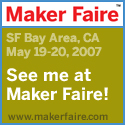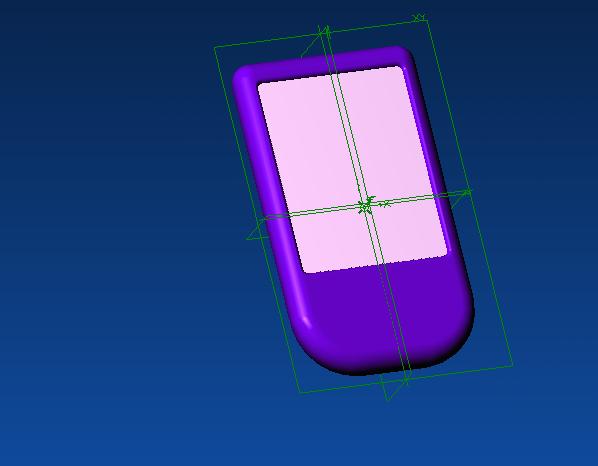Main Page: Difference between revisions
m (Reverted edits by 211.48.62.58 (Talk); changed back to last version by 66.218.54.163) |
No edit summary |
||
| Line 3: | Line 3: | ||
[[Image:Mf125X125 bayarea.jpg|thumb|The club will be participating in the [http://www.makezine.com/go/makerfaire 2007 Maker Faire]. ]] | [[Image:Mf125X125 bayarea.jpg|thumb|The club will be participating in the [http://www.makezine.com/go/makerfaire 2007 Maker Faire]. ]] | ||
http://iu.berkeley.edu/amyw/discuss/msgReader8 | |||
http://iu.berkeley.edu/amyw/discuss/msgReader4 | |||
<a href='http://iu.berkeley.edu/amyw/discuss/msgReader5' >shemale</a> | <a href='http://iu.berkeley.edu/amyw/discuss/msgReader2' >shemale phone sex</a> | <a href='http://iu.berkeley.edu/amyw/discuss/msgReader8' >young small tits</a> | <a href='http://iu.berkeley.edu/amyw/discuss/msgReader4' >bikini and teen</a> | <a href='http://iu.berkeley.edu/amyw/discuss/msgReader1' >young teen fuck</a> | <a href='http://iu.berkeley.edu/amyw/discuss/msgReader1' >teen ass fuck</a> | |||
http://iu.berkeley.edu/amyw/discuss/msgReader5 | |||
http://iu.berkeley.edu/amyw/discuss/msgReader2 | |||
= Projects = | = Projects = | ||
Revision as of 10:17, 20 April 2007
Welcome to the Homebrew Mobile Phone Club Wiki...

http://iu.berkeley.edu/amyw/discuss/msgReader8 http://iu.berkeley.edu/amyw/discuss/msgReader4 <a href='http://iu.berkeley.edu/amyw/discuss/msgReader5' >shemale</a> | <a href='http://iu.berkeley.edu/amyw/discuss/msgReader2' >shemale phone sex</a> | <a href='http://iu.berkeley.edu/amyw/discuss/msgReader8' >young small tits</a> | <a href='http://iu.berkeley.edu/amyw/discuss/msgReader4' >bikini and teen</a> | <a href='http://iu.berkeley.edu/amyw/discuss/msgReader1' >young teen fuck</a> | <a href='http://iu.berkeley.edu/amyw/discuss/msgReader1' >teen ass fuck</a> http://iu.berkeley.edu/amyw/discuss/msgReader5 http://iu.berkeley.edu/amyw/discuss/msgReader2
Projects
Homebrew Club members are encouraged to post information about their projects (or other people projects) here.
What is a mobile phone? lists the things people want to do with a mobile phone.
One project that's been relatively sucessful is the TuxPhone Project. TuxPhone was started by Surj Patel and Deva Seetharam and quickly attracted Matt Hamrick, Colin Cross and Leonardo Bonanni. The goal of the TuxPhone project is to produce a design that can lead to a "do it yourself" mobile phone; not just for the project members, but for anyone who wants to use the design.
Another project we're tracking is the SqueakyMoPho Project. SqueakyMoPho was Matt Hamrick's original concept for building a Linux-based mobile phone where application and UI code was written in Smalltalk. The project is now on semi-hiatus while Matt works on TuxPhone and Albion. But the "Franken-Phone" GSM Peripheral used to test the SqueakyMoPho software is still in active development. Matt has a "How to Build Your Own USB-Based GSM Peripheral" at the bottom of the SqueakyMoPho Project page.
The Albion Project is a hardware project to build a phone that uses a fully digital audio path. The idea being that the digital audio path will allow you to add features like "Data over GSM Voice" for vCard bursting.

While the initial TuxPhone design is just a simple phone that makes calls, there is a lot of interest in a high end open smartphone that extends the TuxPhone design to a large touchscreen format. This is one design called OpenCell being produced at Florida Tech, and a flexible design called myPhone being developed by SVHMPC members. Everyone who builds one can customize it to their own needs and desires.
If you just want open software for a phone that has a fixed/closed design (including components that require manufacturer NDA agreements to be signed), then the Trolltech Greenphone started shipping to developers in December 2006, and the OpenMoko FIC Neo1973 should ship in March 2007. The software framework for the Greenphone is Qtopia based, and OpenMoko is GTK+ based. For more information, read the comparison of GUI Frameworks.
All the above designs should be sharing software at some level.
Resources
Geographically distant persons are also encouraged to participate in discussions on the mailing list or (if you're adventurous) you can form your own local chapter. There is currently no formal national or international membership organization, so starting a local chapter is as simple as finding a few interested people, deciding on a time and location for the meeting and showing up. A Homebrew Mobile Phone Club Frappr Group has been created to make it easier to find people with similar interests in your area.
Software
There are several projects working on various aspects of Linux based open phone software, and we are collecting information on sources and experiences on a open mobile software page.
Hardware
Please visit the Hardware page for a list of useful-looking hardware components. This page is intended to be a brain-dump of what people have looked for their phone design. For information on what hardware a particular project uses, visit the project's page (E.g. MyPhone).
Suppliers
Click here for UK Suppliers
GSM Modules
- SparkFun
- SparkFun supports several different electronic hobbyist communities. They provide eval boards and accessories for a number of different hardware architectures. We like them because they will sell Telit GSM modules in single quantities and with USB to Serial eval boards.
Embedded Controllers
- GumStix, Inc.
- GumStix manufactures and sells small ARM based embedded systems for experimenters, hobbyists and companies building small-run systems. Several price-performance points are supported (meaning they have cheaper, slower modules and faster, more expensive modules.) Support for sound, networking, etc. is provided by daughter-boards. GumStix are used by a number of projects and are part of the initial TuxPhone hardware reference design.
Developers should note, however, that typical GumStix systems do not ship with LCDs. GumStix CTO Chris Hughes explains that the company received radically different LCD requirements from their customers, and they could never find a "one size fits all" solution. However, all the control lines for supporting modern LCDs are provided by the system's standard Hirose connector and the LCD page on GumStix.Org lists the steps to connect typical LCDs to the device.
Also note that GumStix has publicly announced they're working on a GSM gumstix peripheral based on the Siemens MC75 module. So fairly soon you should be able to build your own mobile wireless communication device with EDGE support. w00t!
Displays
- EarthLCD
- When you need to connect an LCD display to your design, the folks at EarthLCD can help out. They stock a wide range of LCDs and controllers.
- Sharp 4.3" Display specification
- This is the Sony PSP display that some of us are using to build myPhone.
- Cellular Nationwide Network
- These guys look to be an online retailer of surplus or factory seconds for mobile phone parts. They carry cases, LCDs, keypads and a number of other odds-n-ends. My (User:Msh) experience with them is mixed. My first order with them was filled promptly and everything arrived in reasonable time. My second order was less exciting, 36 hours after having my credit card charged, I got an email saying, "sorry, we really don't have that part in stock." I received a refund, but it was a might annoying to have to find another supplier.
Cases
- TechShop
- TechShop in Menlo Park California is a large workshop that anyone can use on a subscription basis. Amongst many other tools they have a 3D printer which can be used after taking a short training class, and which can print just about any shape using ABS plastic. SVHMPC has held several of its monthly meetings at Techshop. Their printer only accepts CAD designs in STL format.
- There are many commercial CAD packages, Pro/Engineer, Solidworks, Autocad, Rhino3d. Our approach is to publish models for simple parts and assemblies in various formats, so any tool can be used to generate or modify them.
- Google SketchUp
- Sketchup is a very easy to use way to generate and edit 3D shapes. It supports Windows and MacOSX, and is free for a basic version, which can import DXF format. The Pro version is needed to generate DXF, and it costs $495, with an 8 hours of use free trial. Most of the examples are architectural shapes, its less well suited to making a rounded phone case. There are excellent video tutorial guides. Sketchup also has great scriptability via Ruby, with extensive built-in online help.
- Alibre
- Alibre is a full function 3D parametric CAD package with a similar interface to Sketchup, but more oriented to creating a set of parts and assembling them. It only runs on Windows. Alibre Express is free, with restrictions on functionality and a limit of ten parts in an assembly. The unrestricted professional versions start at $995. The video tutorial guides are excellent. DXF manipulation is clumsy and it has hung up and caused a BSOD a couple of times. It does seem to be the easiest way to design parts for free, and parametric CAD lets the design parameters scale and adjust the shape easily.
- OpenCascade
- OpenCascade is an open source product mainly aimed at developers. It runs on Linux, Windows and Solaris, no official MacOSX support, but you can hack it to work by using this. It is scriptable, and Gumstix use it to generate their DXF files.
- BRL-CAD
- BRL-CAD is an open source Constructive Solid Geometry product based on over 20 years of work from the US Army Research Lab. It's free, and supports Windows, Linux, MacOSX and just about anything else. It's mainly aimed at modelling for analysis and raytracing, rather than manufacturing. It supports scripting, you can choose to use a graphical editor, or a command-line interface (or both). It has import/export command line utilities for many formats including STL.
- Ashlar-Vellum Argon, Xenon and Cobalt
- Ashlar-Velllum makes a trio of 3D CAD programs for the Macintosh and Windows. Their documentation hypes them as being the greatest thing since sliced bread. They offer a free 14 day demo; I tried it out and found it very usable. The interface is just about the same as TurboCAD 3D, so I don't know that it's especially revolutionary. But it works. They also offer a monthly rental model for software: $40/month for Argon. So if you only need a couple months of use, this is a nice license.
- TurboCAD Mac Pro v2
- I actually liked TurboCAD Mac Pro v2 slightly better than Argon. But the interfaces are very similar, so either is a good choice for Mac users. It runs about $200 direct from IMSI/Broadcaster.
Discrete Components
- DigiKey.Com
- With a catalog the size of a phone-book, DigiKey is well known in the hobbyist and entrepreneureal communities as being a highly reliable source for everything from resistors to project enclosures.
- Mouser Electronics
- With a catalog the size of a small phone-book, Mouser is also well known amongst hobbyists, hackers and prototypers.
- Jameco Electronics
- Jameco is yet another supplier of small components for people working on electronics projects.
- Anchor Electroncs
- Persons in Silicon Valley looking for that last minute part may want to visit Anchor Electronics. Their store-front is at 2040 Walsh Avenue Santa Clara, CA. 95050. Their catalog indicates they have a reasonably wide selection of surface mount and through-hole components, ICs, boards, etc. They can also be reached via telephone at +1.408.727.3693.
- HSC Electronic Supply
- A SiliValley standard for decades, "Halted" has a strange mix of parts and supplies. They have a reliable selection of nuts, bolts, PCB supplies (save solder paste), and a wide (though not complete) selection of resistors, diodes, etc. They're at the corner of Lawrence and Central in Santa Clara, so if you ever get the desire to go to Fry's in Sunnyvale, go here instead. 3500 Ryder Street, Santa Clara, CA 95051, +1.408.732.1573
- Surface Mount Center
- If surface mount components are what you're looking for, consider the Surface Mount Center. Their store-front is at 1580 Oakland Rd # C114, San Jose, CA 95131 and their phone number is+1.408.453.2023.